Endika Gil-Uriarte
alurity, a toolbox for robot cybersecurity
Oct 16, 2020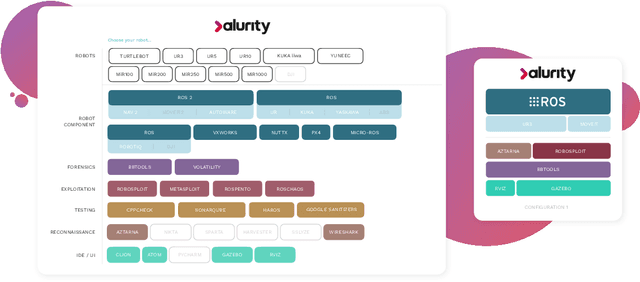
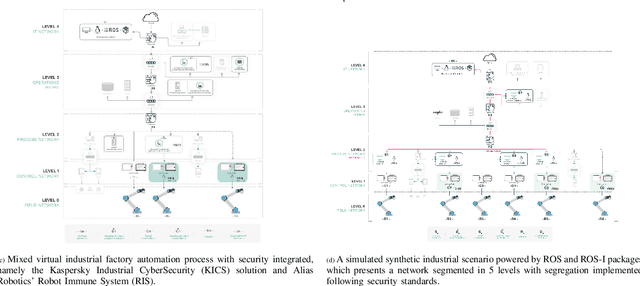
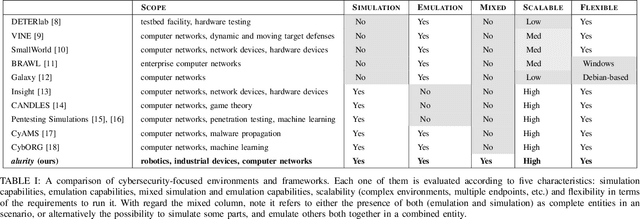
Abstract:The reuse of technologies and inherent complexity of most robotic systems is increasingly leading to robots with wide attack surfaces and a variety of potential vulnerabilities. Given their growing presence in public environments, security research is increasingly becoming more important than in any other area, specially due to the safety implications that robot vulnerabilities could cause on humans. We argue that security triage in robotics is still immature and that new tools must be developed to accelerate the testing-triage-exploitation cycle, necessary for prioritizing and accelerating the mitigation of flaws. The present work tackles the current lack of offensive cybersecurity research in robotics by presenting a toolbox and the results obtained with it through several use cases conducted over a year period. We propose a modular and composable toolbox for robot cybersecurity: alurity. By ensuring that both roboticists and security researchers working on a project have a common, consistent and easily reproducible development environment, alurity aims to facilitate the cybersecurity research and the collaboration across teams.
Can ROS be used securely in industry? Red teaming ROS-Industrial
Sep 17, 2020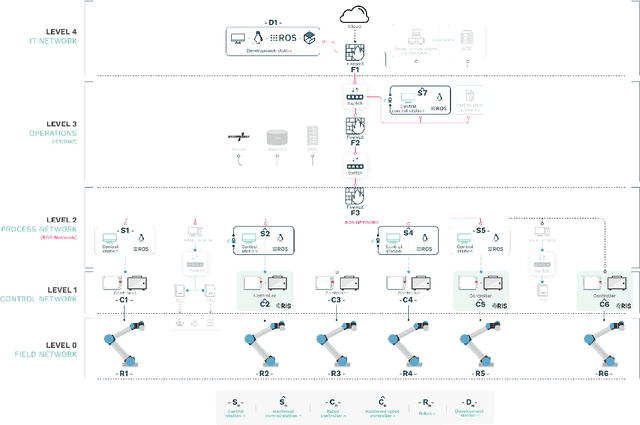
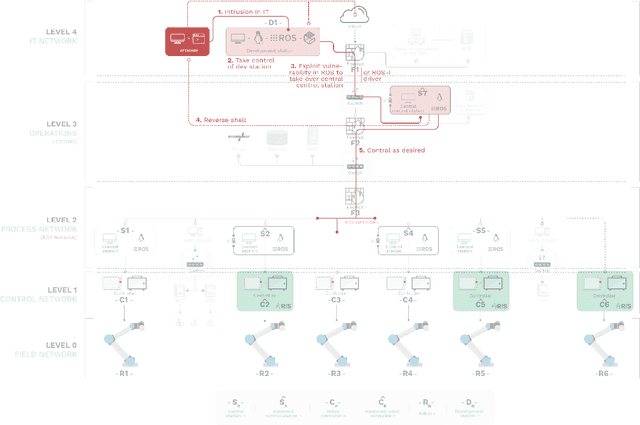
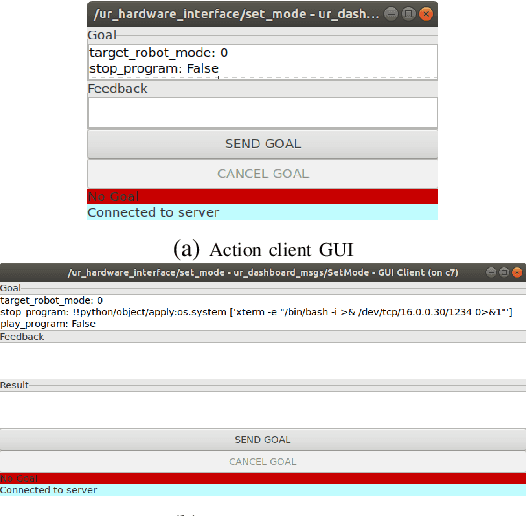
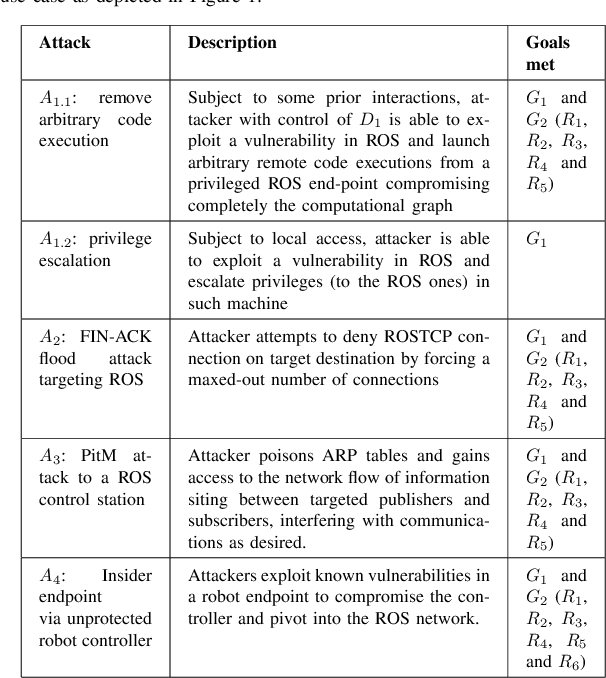
Abstract:With its growing use in industry, ROS is rapidly becoming a standard in robotics. While developments in ROS 2 show promise, the slow adoption cycles in industry will push widespread ROS 2 industrial adoption years from now. ROS will prevail in the meantime which raises the question: can ROS be used securely for industrial use cases even though its origins didn't consider it? The present study analyzes this question experimentally by performing a targeted offensive security exercise in a synthetic industrial use case involving ROS-Industrial and ROS packages. Our exercise results in four groups of attacks which manage to compromise the ROS computational graph, and all except one take control of most robotic endpoints at desire. To the best of our knowledge and given our setup, results do not favour the secure use of ROS in industry today, however, we managed to confirm that the security of certain robotic endpoints hold and remain optimistic about securing ROS industrial deployments.
DevSecOps in Robotics
Mar 25, 2020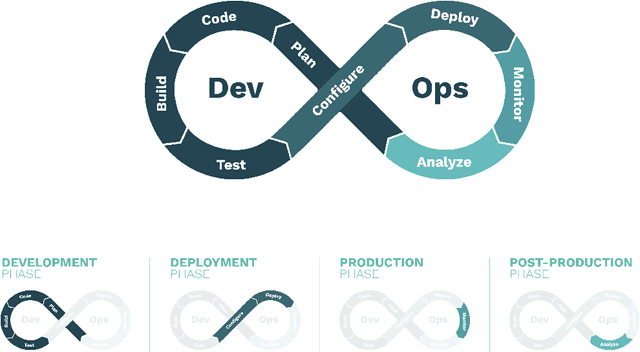
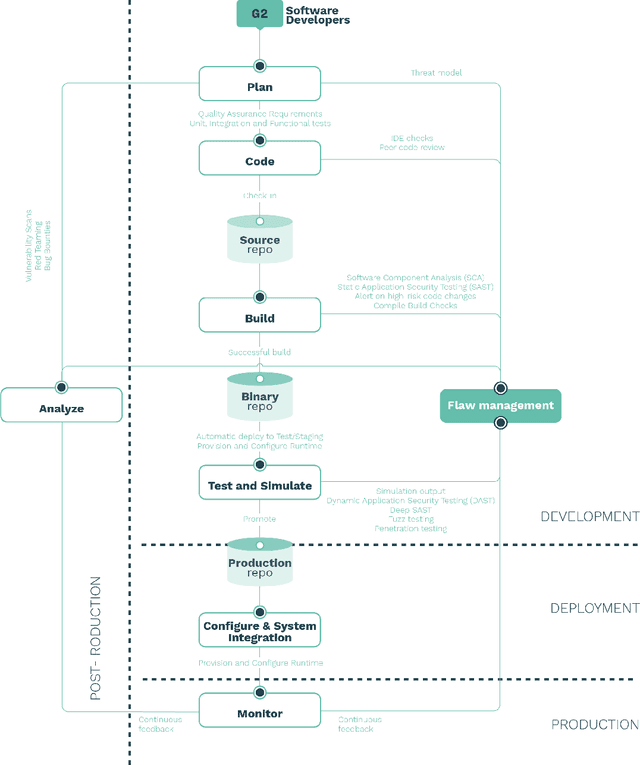
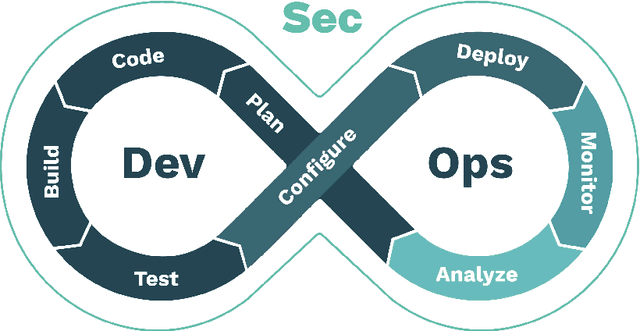
Abstract:Quality in software is often understood as "execution according to design purpose" whereas security means that "software will not put data or computing systems at risk of unauthorized access." There seems to be a connection between these two aspects but, how do we integrate both of them in the robotics development cycle? In this article we introduce DevSecOps in Robotics, a set of best practices designed to help roboticists implant security deep in the heart of their development and operations processes. First, we briefly describe DevOps, introduce the value added with DevSecOps and describe and illustrate how these practices may be implemented in the robotics field. We finalize with a discussion on the relationship between security, quality and safety, open problems and future research questions.
Introducing the Robot Vulnerability Database (RVD)
Dec 24, 2019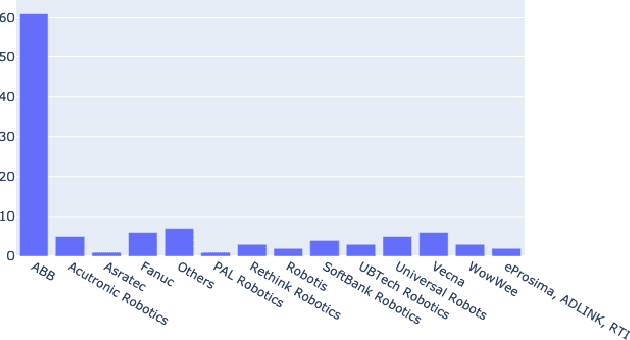

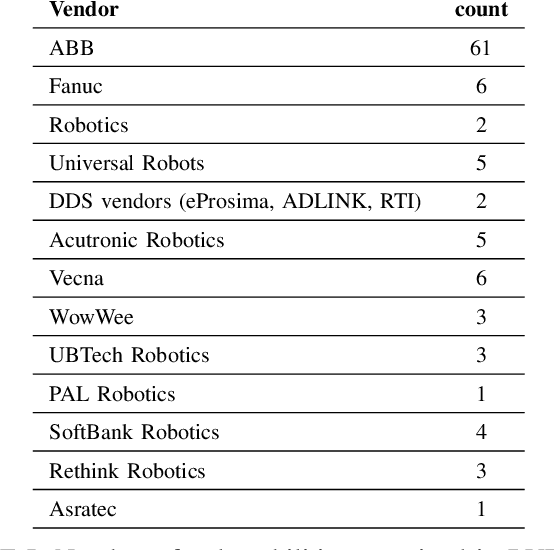
Abstract:Cybersecurity in robotics is an emerging topic that has gained significant traction. Researchers have demonstrated some of the potentials and effects of cyber attacks on robots lately. This implies safety related adverse consequences causing human harm, death or lead to significant integrity loss clearly overcoming the privacy concerns in classical IT world. In cybersecurity research, the use of vulnerability databases is a very reliable tool to responsibly disclose vulnerabilities in software products and raise willingness of vendors to address these issues. In this paper we argue, that existing vulnerability databases are of insufficient information density and show some biased content with respect to vulnerabilities in robots. This paper presents the Robot Vulnerability Database (RVD), a directory for responsible disclosure of bugs, weaknesses and vulnerabilities in robots. This article aims to describe the design and process as well as the associated disclosure policy behind RVD. Furthermore the authors present preliminary selected vulnerabilities already contained in RVD and call to the robotics and security communities for contribution to the endeavour of eliminating zero-day vulnerabilities in robotics.
Volatile memory forensics for the Robot Operating System
Dec 22, 2018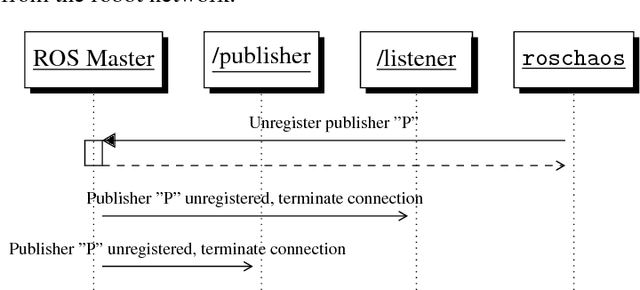
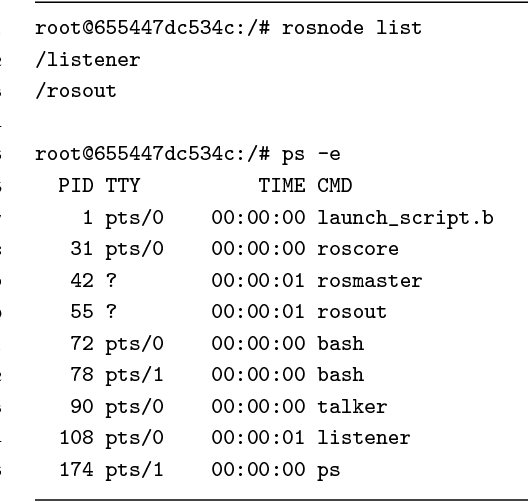
Abstract:The increasing impact of robotics on industry and on society will unavoidably lead to the involvement of robots in incidents and mishaps. In such cases, forensic analyses are key techniques to provide useful evidence on what happened, and try to prevent future incidents. This article discusses volatile memory forensics for the Robot Operating System (ROS). The authors start by providing a general overview of forensic techniques in robotics and then present a robotics-specific Volatility plugin named linux_rosnode, packaged within the ros_volatility project and aimed to extract evidence from robot's volatile memory. They demonstrate how this plugin can be used to detect a specific attack pattern on ROS, where a publisher node is unregistered externally, leading to denial of service and disruption of robotic behaviors. Step-by-step, common practices are introduced for performing forensic analysis and several techniques to capture memory are described. The authors finalize by introducing some future remarks while providing references to reproduce their work.
Aztarna, a footprinting tool for robots
Dec 22, 2018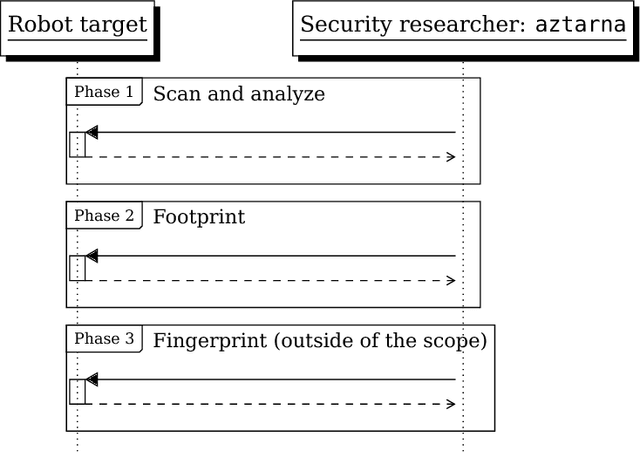
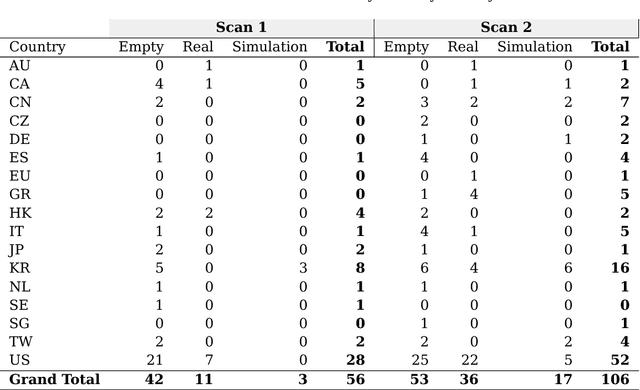
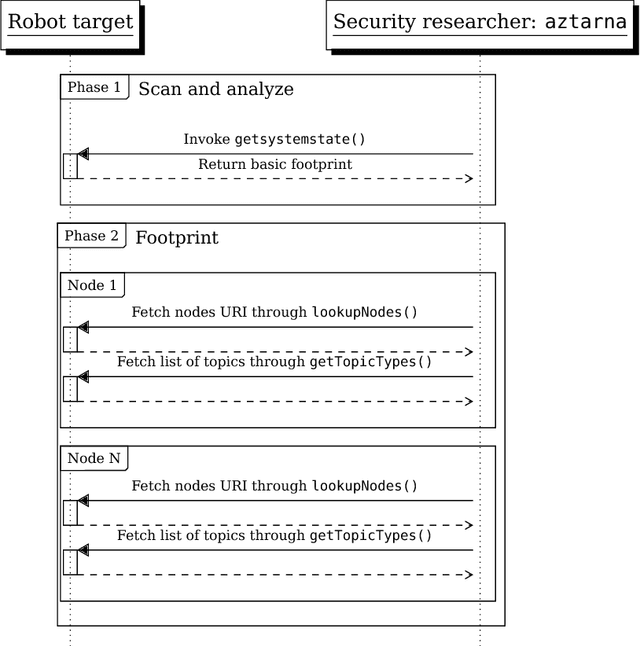

Abstract:Industry 4.0 is changing the commonly held assumption that robots are to be deployed in closed and isolated networks. When analyzed from a security point of view, the global picture is disheartening: robotics industry has not seriously allocated effort to follow good security practices in the robots produced. Instead, most manufacturers keep forwarding the problem to the end-users of these machines. As learned in previous technological revolutions, such as at the dawn of PCs or smartphones, action needs to be taken in time to avoid disastrous consequences. In an attempt to provide the robotics and security communities with the right tools to perform assessments, in this paper we present aztarna, a footprinting tool for robotics. We discuss how such tool can facilitate the process of identifying vestiges of different robots, while maintaining an extensible structure aimed for future fingerprinting extensions. With this contribution, we aim to raise awareness and interest of the robotics community, robot manufacturers and robot end-users on the need of starting global actions to embrace security. We open source the tool and disclose preliminary results that demonstrate the current insecurity landscape in industry. We argue that the robotic ecosystem is in need of generating a robot security community, conscious about good practices and empowered by the right tools.
Robotics CTF , a playground for robot hacking
Oct 01, 2018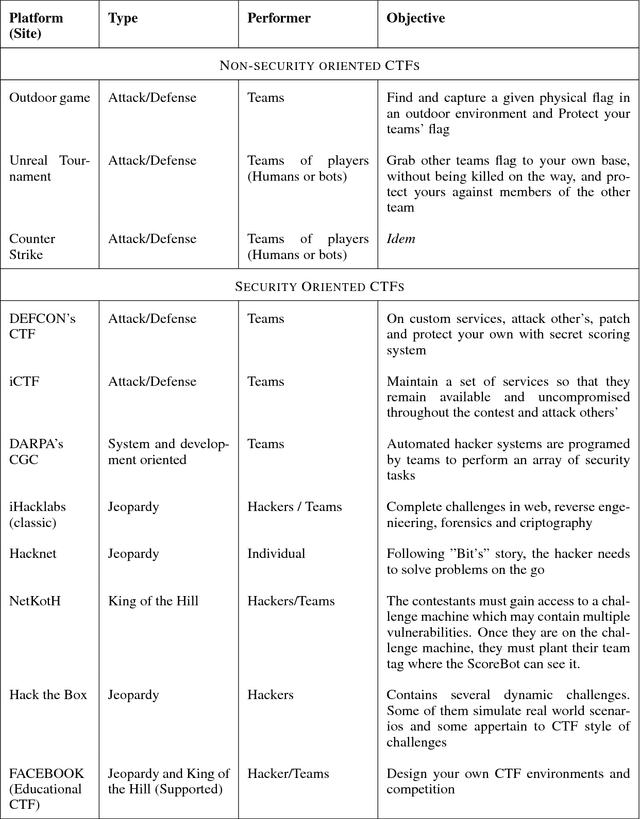
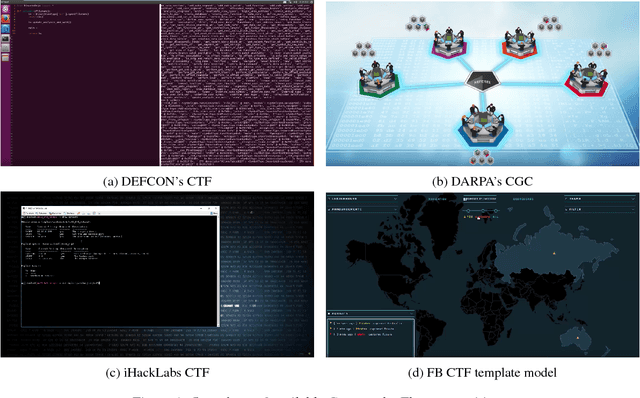
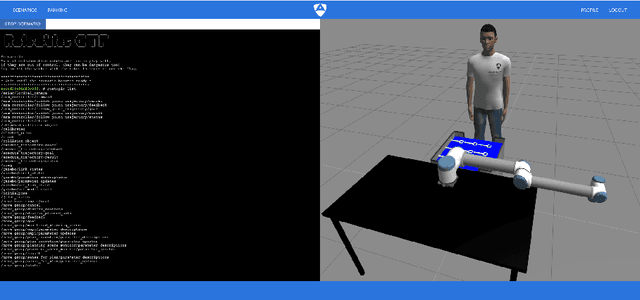
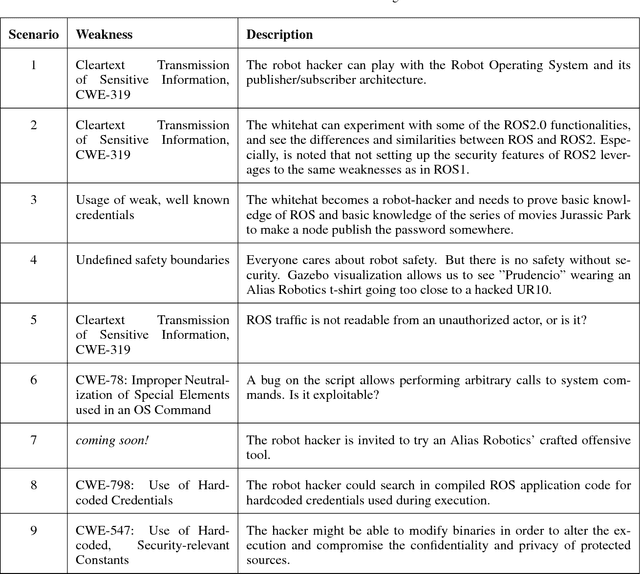
Abstract:Robots state of insecurity is onstage. There is an emerging concern about major robot vulnerabilities and their adverse consequences. However, there is still a considerable gap between robotics and cybersecurity domains. For the purpose of filling that gap, the present technical report presents the Robotics CTF (RCTF), an online playground to challenge robot security from any browser. We describe the architecture of the RCTF and provide 9 scenarios where hackers can challenge the security of different robotic setups. Our work empowers security researchers to a) reproduce virtual robotic scenarios locally and b) change the networking setup to mimic real robot targets. We advocate for hacker powered security in robotics and contribute by open sourcing our scenarios.
Towards an open standard for assessing the severity of robot security vulnerabilities, the Robot Vulnerability Scoring System
Jul 26, 2018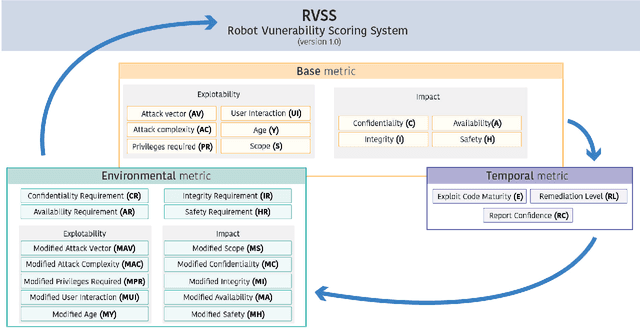
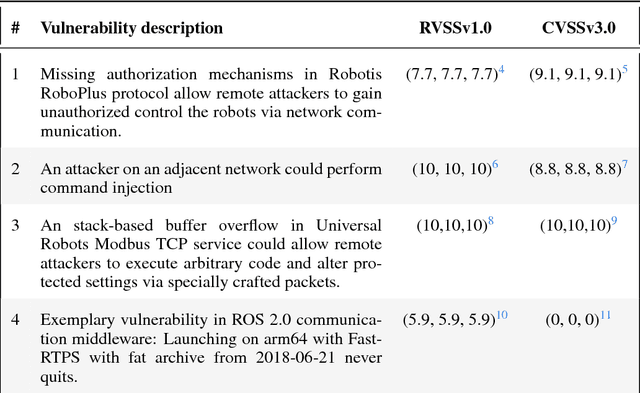
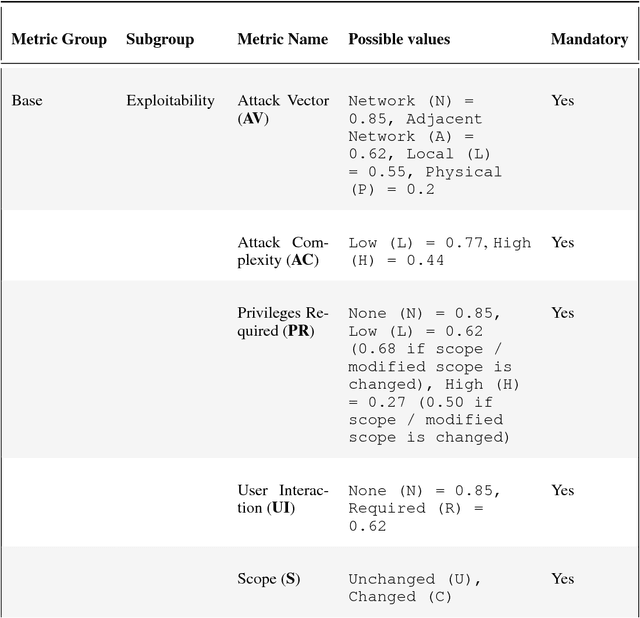
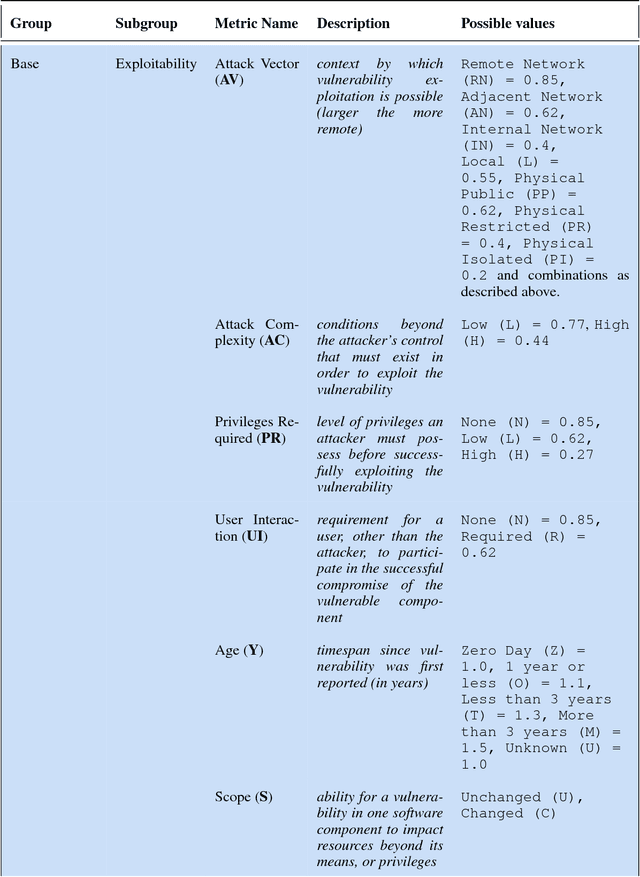
Abstract:Robots are typically not created with security as a main concern. Contrasting to typical IT systems, cyberphysical systems rely on security to handle safety aspects. In light of the former, classic scoring methods such as the Common Vulnerability Scoring System (CVSS) are not able to accurately capture the severity of robot vulnerabilities. The present research work focuses upon creating an open and free to access Robot Vulnerability Scoring System (RVSS) that considers major relevant issues in robotics including a) robot safety aspects, b) assessment of downstream implications of a given vulnerability, c) library and third-party scoring assessments and d) environmental variables, such as time since vulnerability disclosure or exposure on the web. Finally, an experimental evaluation of RVSS with contrast to CVSS is provided and discussed with focus on the robotics security landscape.
Introducing the Robot Security Framework (RSF), a standardized methodology to perform security assessments in robotics
Jun 11, 2018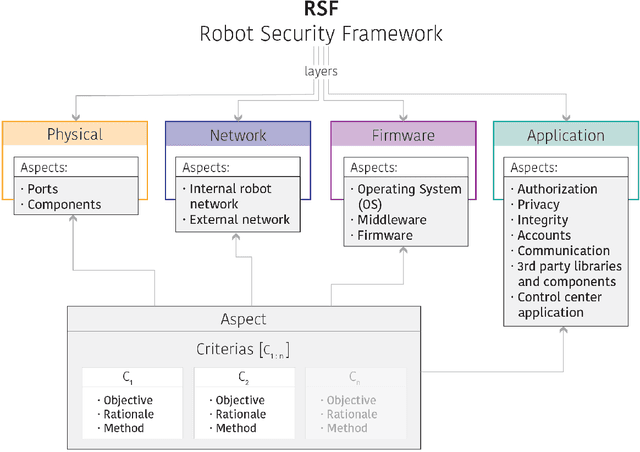



Abstract:Robots have gained relevance in society, increasingly performing critical tasks. Nonetheless, robot security is being underestimated. Robotics security is a complex landscape, which often requires a cross-disciplinar perspective to which classical security lags behind. To address this issue, we present the Robot Security Framework (RSF), a methodology to perform systematic security assessments in robots. We propose, adapt and develop specific terminology and provide guidelines to enable a holistic security assessment following four main layers (Physical, Network, Firmware and Application). We argue that modern robotics should regard as equally relevant internal and external communication security. Finally, we advocate against "security by obscurity". We conclude that the field of security in robotics deserves further research efforts.
 Add to Chrome
Add to Chrome Add to Firefox
Add to Firefox Add to Edge
Add to Edge